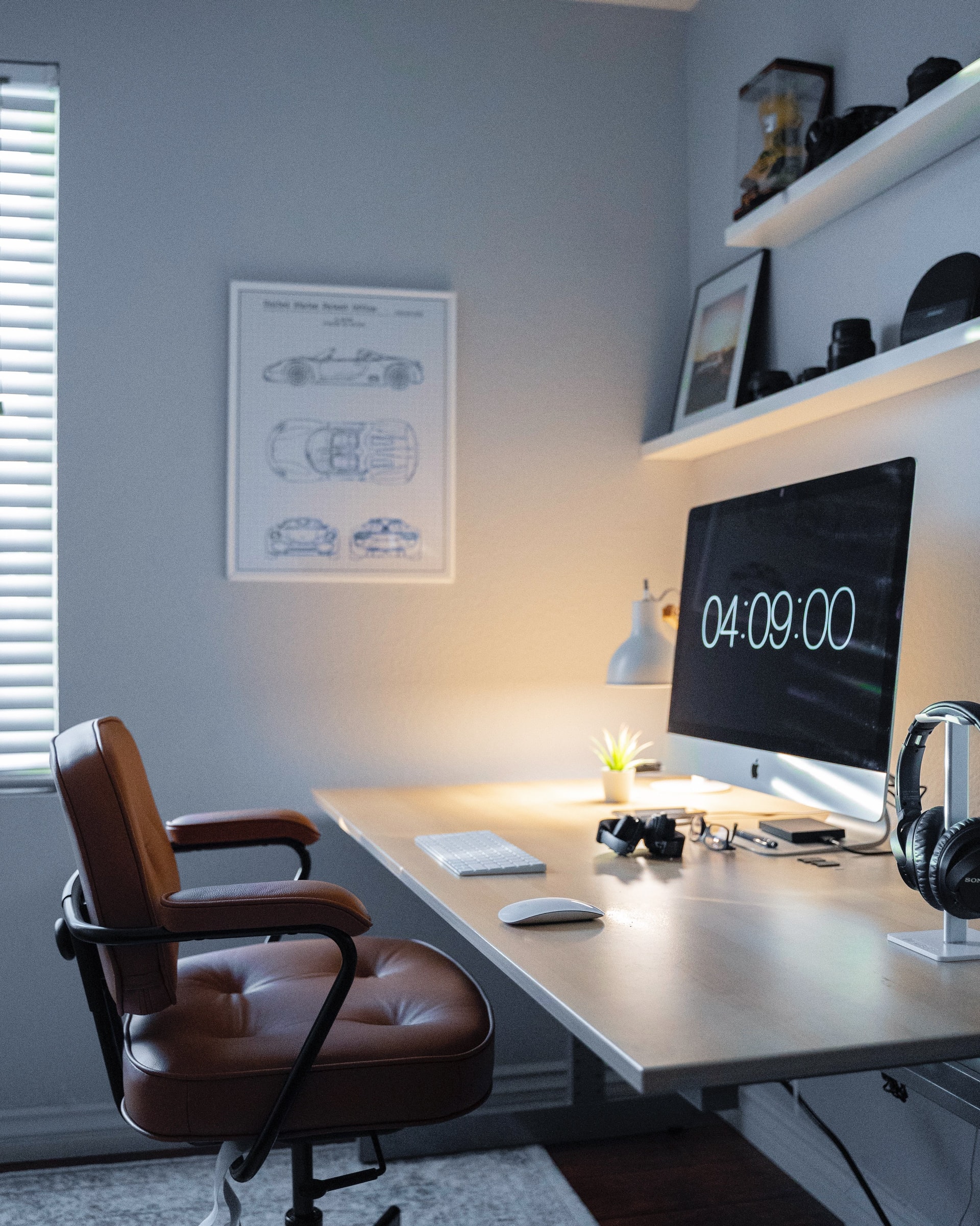2020 has been the year of remote work. Back in January, you’d find very few people who regularly worked on a remote basis. It tended to be the realm of the self-employed and freelancers, while employed staff was much more likely to work in-office or within other forms of commercial premises. But the rapid spread of coronavirus and Covid-19, causing a worldwide pandemic, has seen huge numbers of people working from home since March.
Whether your employers have decided to let go of their commercial premises and switch you to a remote role permanently, or you’re planning on working remotely for the foreseeable future until it’s truly safe to head back to commercial premises, it’s absolutely essential that you set up your home workstation properly. Not only is this important for your productivity, but it’s essential for your overall health and wellbeing too. So, what can you do to create a quality home working environment? The following steps should help you to get started out on the right path.
IMAGE: UNSPLASH
1. Choose Your Workspace Wisely
The first step you should take when setting up your workstation is to choose your space wisely. All too many people make the mistake of slipping into bad habits with their workspace early on and these can be difficult to get out of in the long run. If you’re working from home, chances are you’ve tried working from the sofa or from bed already. Sure, this may seem like a novelty and something that you might want to take advantage of. But avoid this at all costs.
First and foremost, you need to separate your personal space and your professional space as much as possible in order to create a healthy work-life balance. Certain spaces should be to relax in. Certain spaces should be conducive of productivity.
Secondly, it’s not good for your posture. You’ll be encouraged to slouch and may find yourself tilting your head down to see your laptop screen on your lap for long periods of time.
Thirdly, people you live with are more likely to interrupt you if you work in this way. They won’t see you as being particularly busy or productive, so are more likely to pop in for a chat and distract you. So, instead, define your workspace. Choose a set space that you dedicate to work and stick to it. If you have a spare room, great! If not, a seat at a desk or table is ideal. Try to ensure the space:
- Has plenty of natural light
- Is well ventilated
- Is a comfortable temperature
2. Make Sure Your Connection Is Secure And Strong
If you’re working from home, you’re going to become pretty dependent on your tech and your internet connection. Why? Well, if you’re not able to connect to the internet, you’re not going to be able to get much work done. Whether that’s writing copy, editing photos, managing marketing emails, responding to customer queries, delegating tasks or whatever other tasks your job entails. So, you need to make sure that your connection is always secure and strong.
It’s best to browse different network providers in your area and check their speeds. There’s no one “best” internet provider. Instead, the best provider for you will depend on your unique location. Sometimes, the cheapest deal isn’t always the best and, when you work from home, you should consider your internet connection an investment in your ability to work to a high standard.
Once you have a quality internet connection, it’s also a good idea to look into SD-WAN providers. SD-WAN is quickly replacing “wide area networks”, or “WANs”, as businesses are upgrading their networking to better operate in today’s cloud-based world! Don’t get left behind.
3. Invest In Ergonomic Furniture
The above two steps will help you to work productively. But now, let’s focus on working safely. As we briefly mentioned above, working in the wrong way could cause aches, pains and even chronic strains. So, you need to make sure that your workstation is ergonomically designed. There’s all sorts of ergonomically designed furniture out there, ranging from ergonomic desks to ergonomic chairs and more.
These pieces of furniture have been specially designed to ensure that you maintain proper posture while you work and that you are working in a way that isn’t detrimental to your body. Many people avoid forking out for this kind of furniture, but you should definitely see it as a worthwhile investment in your physical health and wellbeing.
4. Invest In Ergonomic Accessories
Furniture isn’t where ergonomically designed work equipment ends. There are plenty of ergonomically designed accessories on the market too. Giving them a browse can help to determine which will best suit your needs. There are ergonomic back supports to ensure you are comfortably maintaining good posture in your seat throughout the day.
There are ergonomic wrist supports for while you’re typing. There are ergonomic keyboards, mice, and more. Just think how much you use these things throughout the curse of your working day. Having the right accessories can make all the difference to your comfort and your wellbeing!
5. Invest In Storage Solutions
We tend to have a lot of things to store associated with our work. In the office, these can be left about. But chances are you don’t want your professional files, stationery, and more cluttering up your home space. So, invest in quality storage solutions. Whether that’s binders and files, storage cabinets, pen pots, or anything else that helps to organize and neaten things up a little.
These pieces of advice may seem relatively simple, but you’d be amazed at the difference they can make to each of your working days. Try incorporating them into your home workstation as and when you can. Remember, the sooner you can implement these changes, the better, as you’ll see results faster.
If you are interested in even more lifestyle-related articles and information from us here at Bit Rebels, then we have a lot to choose from.


COMMENTS